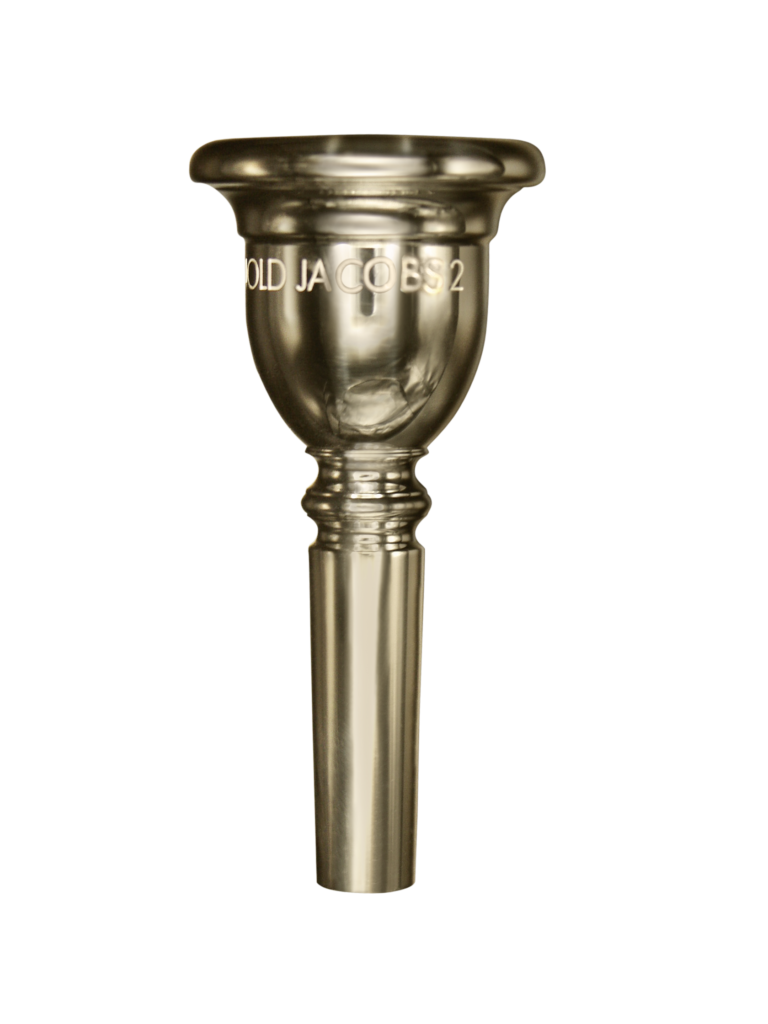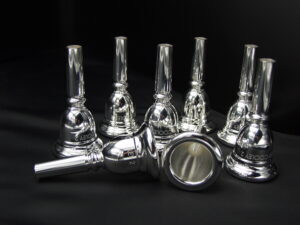CHIBrass Mouthpieces
We are pleased to announce a joint project with CHIBrass to reproduce some of Arnold Jacobs’ and Floyd Cooley’s mouthpieces!
chibrass.com
CHIBrass Arnold Jacobs Mouthpieces
 |
 |
 |
| Jacobs 2 | ||
 |
 |
 |
| JS Helleberg | JR Helleberg | Jacobs Adjustable Cup |
CHIBrass Floyd Cooley Mouthpieces
 |
 |
 |
| Cooley 2 | ||
Arnold Jacobs about mouthpieces:
From Arnold Jacobs: Song and Wind*
Depending on the music being played, Jacobs also used different tubas, including a BB tuba and the smaller F tuba. Primarily, he used his York CC tuba and altered the sound by switching mouthpieces, often using several mouthpieces in a single concert to achieve the proper sound for particular compositions.
“I own fourteen tubas and forty different mouthpieces. Within our trombone section and in our hall, we have quite a large range of dynamics, so my choice of instrument and mouthpiece are equated together. It is based on whether I need a certain strength in the fundamental of the tone. If I use a mouthpiece that makes a horn too bright, then the trombones intrude into the overtones, I am not left with anything—I tend to disappear. So I have to find a mouthpiece that brings out the fundamental and lessens the overtones a little bit. Otherwise, the balance in the sections would be lost.”
“There are certain established rules such as a very large tuba played with a very large mouthpiece is going to have a very strong fundamental in the tone and rather weak overtones, a phenomenon that can be measured by electronic analysis.
“If we have the same situation of a very large tuba, and the player is put into a situation where he needs to lighten the tone, this could be done very easily by using a shallow-cup mouthpiece. If he has to do a solo or play some very sprightly music where actually too much weight in the tone would be in the way, the smaller cup mouthpiece would dramatically alter the quality of tone coming out of the tuba. If the player played with somewhat the same embouchure and with the same tuba, the introduction of a shallower cup will immediately enhance the overtones and decrease the amount of fundamental in the tone. I use this procedure a great deal myself when I am playing with a large tuba, one that would be very adequate for a Prokofieff Symphony and the Ring operas of Wagner, but if I have to go on the stage with that tuba to play a French work, Berlioz or something very spirited and light, I immediately will switch to a shallower cup mouthpiece, and the difference in the quality of tone is amazing. We are simulating the change to smaller equipment, even though we are still using the same tuba, we very definitely have an altered quality due to the mouthpiece.
“As soon as I would use the smaller cup mouthpiece, I would gain tremendous projection to the audience because of the increased overtone content and weakened fundamental, but it would be much more recognizable because I would be the soloist. I would not be fighting all sorts of sounds intruding in my overtones. The weakened fundamental would be of no disadvantage and the enhanced overtones would give much more soloistic character to the tone,” Jacobs concluded.
*Arnold Jacobs: Song and Wind, Copyright 1996 Windsong Press, Ltd., All rights reserved.

